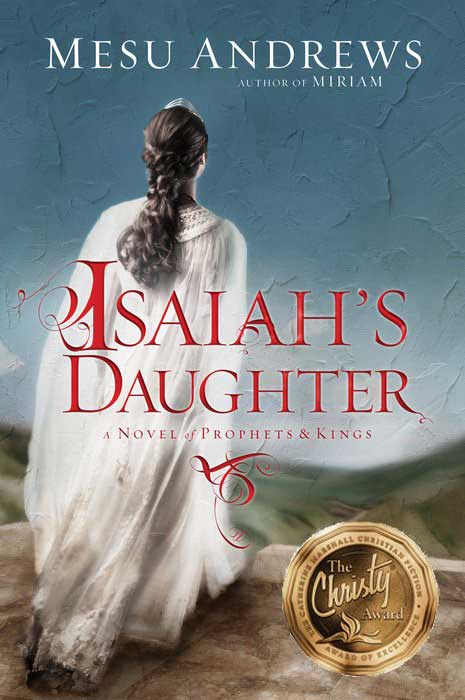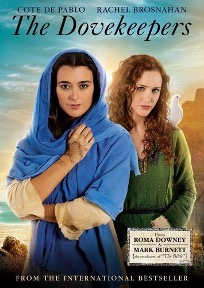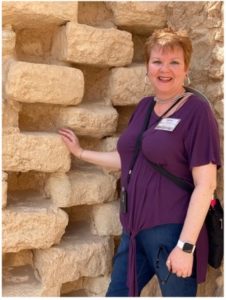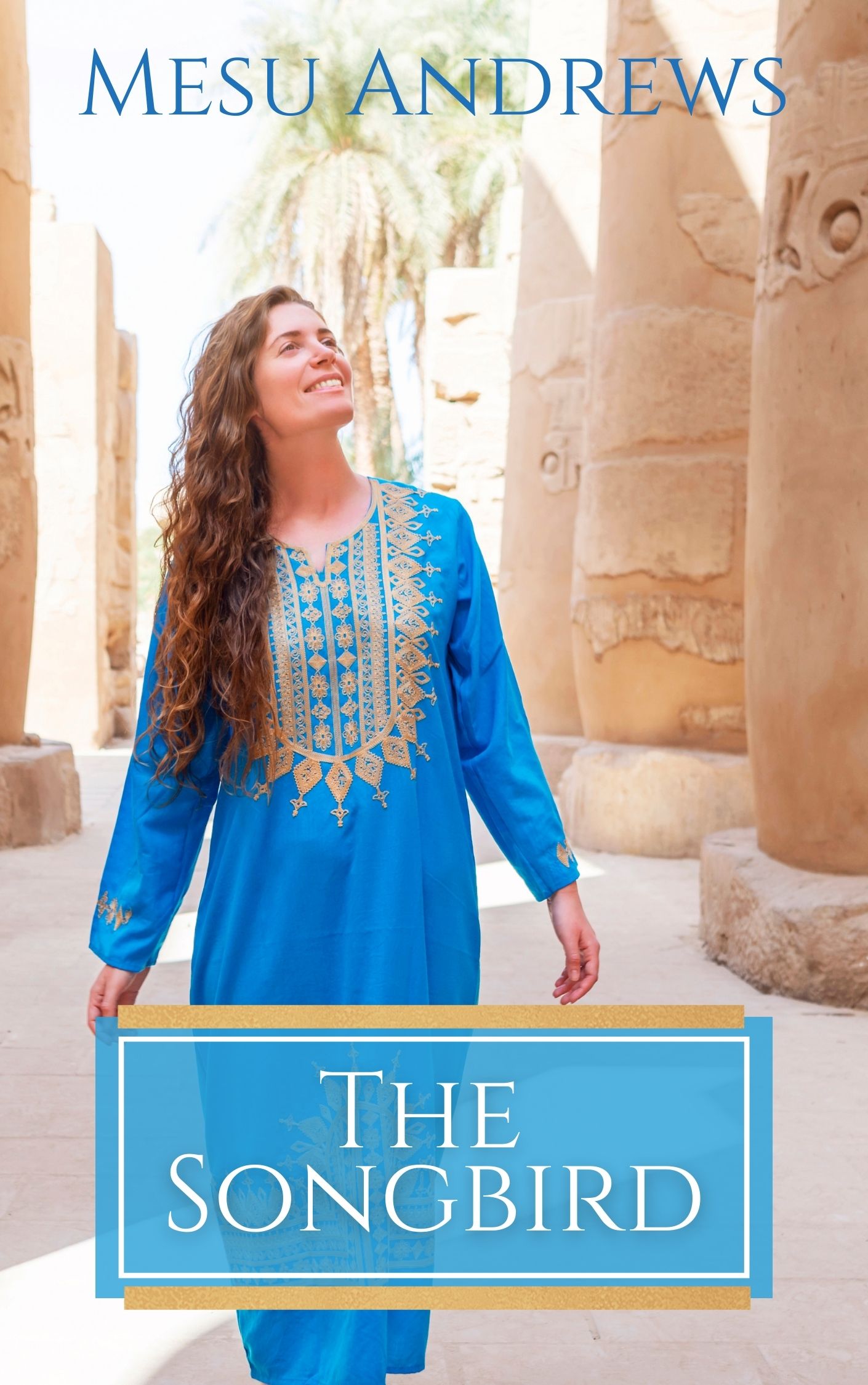Fact Or Fiction – Isaiah’s Daughter
TRUTH: Isaiah’s Family
 Much of what we know of Isaiah’s family is recorded in Scripture:
Much of what we know of Isaiah’s family is recorded in Scripture:
“Then the Lord said to Isaiah, ‘Go out, you and your son Shear-Jashub, to meet Ahaz at the end of the aqueduct of the Upper Pool, on the road to the Launderer’s Field.’” Isaiah 7:3 (emphasis added)
“The Lord said to me, ‘Take a large scroll and write on it with an ordinary pen: Maher-Shalal-Hash-Baz.’ . . . Then I made love to the prophetess, and she conceived and gave birth to a son. And the Lord said to me, ‘Name him Maher-Shalal-Hash-Baz. For before the boy knows how to say, “My father” or “My mother,” the wealth of Damascus and the plunder of Samaria will be carried off by the king of Assyria.’” Isaiah 8:1-4 (emphasis added)
 When I wrote my third book, Love in a Broken Vessel, in 2010-2011, I researched the lives of several pre-exilic prophets. Isaiah was in his late teens during the story of Hosea and Gomer, the voice of God just beginning to whisper in his spirit. I gave his wife a name in that book (fictional) and two sons, thinking I’d followed the Truth of Scripture.
When I wrote my third book, Love in a Broken Vessel, in 2010-2011, I researched the lives of several pre-exilic prophets. Isaiah was in his late teens during the story of Hosea and Gomer, the voice of God just beginning to whisper in his spirit. I gave his wife a name in that book (fictional) and two sons, thinking I’d followed the Truth of Scripture.
But there was a wrinkle… The son spoken of in Isaiah 8:1-4 didn’t arrive until King Ahaz reigned! Love in a Broken Vessel was mainly set during the reigns of the kings Uzziah and Jotham (Ahaz’s grandfather and father). This piece of TRUTH meant I had to use creative FICTION to cover my mistake.
FACT:
As I’ve grown in research capability over the years, I’ve learned to study Jewish tradition (historical FACT) soon after I’ve cemented biblical TRUTH into my plotline. While scouring rabbinic literature about Isaiah’s life, I discovered even more information about his family. Though the third son I added was purely fiction, Isaiah’s daughter Hephzibah is well-documented in Jewish tradition and her name appears twice in Scripture—though not in the context of Isaiah’s family.
First Fact with Sweet Truth:
 No longer will they call you Deserted, or name your land Desolate. But you will be called Hephzibah, and your land Beulah; for the Lord will take delight in you, and your land will be married.” Isaiah 62:4 (emphasis added)
No longer will they call you Deserted, or name your land Desolate. But you will be called Hephzibah, and your land Beulah; for the Lord will take delight in you, and your land will be married.” Isaiah 62:4 (emphasis added)
When I kept in mind that Hephzibah was Isaiah’s only daughter, this Scripture took on new meaning. As the Lord gave the prophet these words to speak over Israel, they become even more tender when we realize they were given by THE Father to Hephzibah’s father to describe the restored Jerusalem in such loving terms. Oh, how desolate and awful Jerusalem was under Ahaz’s reign of idolatry. Did Isaiah witness his own daughter’s desolation? I believe he did though I have no idea what the Truth is about her circumstances. I can only imagine how precious these words must have been to Isaiah’s heart when he heard Yahweh promise that Hephzibah, like Jerusalem, would be His delight.
First Fact with Hard Truth:
 “Hezekiah rested with his ancestors. And Manasseh his son succeeded him as king. Manasseh was twelve years old when he became king, and he reigned in Jerusalem fifty-five years. His mother’s name was Hephzibah.” 2 Kings 20:21-21:1 (emphasis added)
“Hezekiah rested with his ancestors. And Manasseh his son succeeded him as king. Manasseh was twelve years old when he became king, and he reigned in Jerusalem fifty-five years. His mother’s name was Hephzibah.” 2 Kings 20:21-21:1 (emphasis added)
Linking these verses together shows us that if Hephzibah was indeed Isaiah’s Daughter, she was given to King Hezekiah in marriage. Scripture tells us NOTHING ELSE about her. She might have been an idolatrous woman (as Lynn Austin portrays her in her biblical fiction series, Chronicles of the Kings, which I highly recommend!). Or she might have been, as I portrayed her, a righteous woman married to the most righteous king of Judah—Hezi. Regardless, three years into the fifteen-year reprieve God graciously granted after Hezi’s illness, Manasseh was born. And their son became the wickedest king ever recorded in Scripture (2 Kings 21:11).

Zibah’s Adoption – Truth or Fiction?
Some have written to me and asked if Zibah’s (Ishma’s) adoption was fact or fiction. It was completely fiction. Nothing in Jewish tradition pointed to adoption, but I felt it was necessary for Zibah (Ishma) to experience that level of desolation spoken of in Isa. 62 so she could (1) relate to Hezi’s childhood trauma, and (2) realize the full restoration she experienced when Yahweh answered in such miraculous ways. Adoption felt like a beautiful and necessary part of her redemptive story.
Truth: Hezekiah’s Illness
 Hezekiah really did become mortally ill, and it happened very quickly. Isaiah prophesied his death, and then because of Hezekiah’s humble prayer, Yahweh extended his life for fifteen years.
Hezekiah really did become mortally ill, and it happened very quickly. Isaiah prophesied his death, and then because of Hezekiah’s humble prayer, Yahweh extended his life for fifteen years.
What type of illness was it? We know from Scripture (Truth) that it involved a boil to be treated with a fig poultice (2 Kings 20:7; Isa. 38:21).
Fact:
 Many biblical and medical experts believe Hezi’s illness may have been part of an ancient epidemic of Bubonic Plague. I’ll spare you the photos I combed through to write the descriptions of Hezi’s suffering.
Many biblical and medical experts believe Hezi’s illness may have been part of an ancient epidemic of Bubonic Plague. I’ll spare you the photos I combed through to write the descriptions of Hezi’s suffering.
The idea that he might have been infected through a flea bite came from research on the battle of Egypt with Assyria at Libnah. Jewish legend says a supernatural infestation of rats chewed the Assyrian’s leather weapons apart and won the battle for Egypt (who had signed the allied treaty with King Hezekiah against Isaiah’s wishes). Though it was creative fiction to have the flea jump onto Hezi’s arm when the messenger delivered the message, I based it on historical facts and Jewish legend that have survived for centuries.
FACT:
Isaiah’s Daughter was the toughest book I’ve ever written. When the first draft came back from my editor, I could tell by her voice, she wasn’t sure if the manuscript could be fixed. It was that BAD! I heard the same hopelessness in my line editor’s voice after I’d spent three weeks rewriting it! Aaagh!
The key that transformed Isaiah’s Daughter into my first and only Christy Award winner happened when my line editor challenged me to sit at my computer and “become” Zibah (Ishma). “Type non-stop for 20 minutes,” she said. “Tell who you are, what you like and don’t like, and how you feel about your life and the people around you.” It was during that twenty-minute typing exercise that Zibah’s love for doves emerged.
 I knew from previous research that ancient cultures used doves and/or pigeons to exchange messages, and I’d seen dovecotes carved into mountainsides and rock walls. A friend encouraged me to watch the movie, Dovekeepers, about the Jewish zealots who fled the Roman destruction of Jerusalem in 70 A.D. and lived atop Herod’s desert fortress of Masada, using doves for communication with the world below.
I knew from previous research that ancient cultures used doves and/or pigeons to exchange messages, and I’d seen dovecotes carved into mountainsides and rock walls. A friend encouraged me to watch the movie, Dovekeepers, about the Jewish zealots who fled the Roman destruction of Jerusalem in 70 A.D. and lived atop Herod’s desert fortress of Masada, using doves for communication with the world below.
 On our March 2020 Tour of Israel, we traveled to Masada’s desert fortress, and I saw that ancient dovecote in person. Zibah’s doves came alive to me. The moments she spent in quiet solitude with those beautiful birds reminded me that we all need a place, a particular altar that we’ve anointed with our tears and meet with God regularly. My “dovecote” is the left side of the loveseat in our living room. It’s close to the fireplace and cozy in the winter chill and looks out our glass doors so I can enjoy His Creation year-round. Where’s your dovecote?
On our March 2020 Tour of Israel, we traveled to Masada’s desert fortress, and I saw that ancient dovecote in person. Zibah’s doves came alive to me. The moments she spent in quiet solitude with those beautiful birds reminded me that we all need a place, a particular altar that we’ve anointed with our tears and meet with God regularly. My “dovecote” is the left side of the loveseat in our living room. It’s close to the fireplace and cozy in the winter chill and looks out our glass doors so I can enjoy His Creation year-round. Where’s your dovecote?
I hope you’ve enjoyed this FACT OR FICTION page for Isaiah’s Daughter. If you haven’t yet read the book and would like to purchase your copy or learn more about it, CLICK HERE. And if you’re curious to learn more Truth about this story from God’s Word, you’ll discover more of Judah’s roller-coaster faith story in 2 Kings 16-20, 2 Chronicles 28-32, Isaiah, and Micah. Happy reading!
*CLICK HERE for a list of all my books (including free novella downloads) in order of publication.


